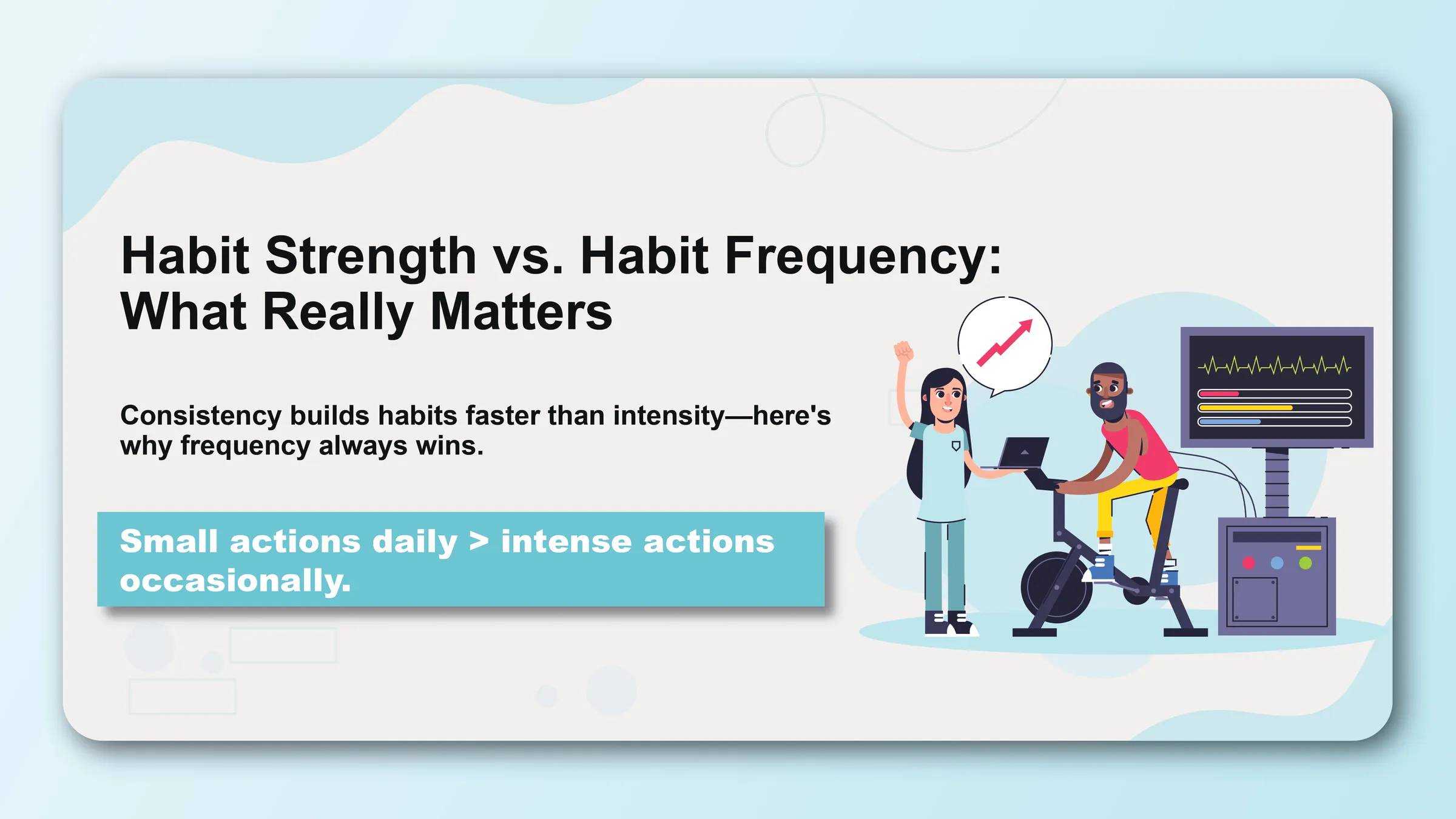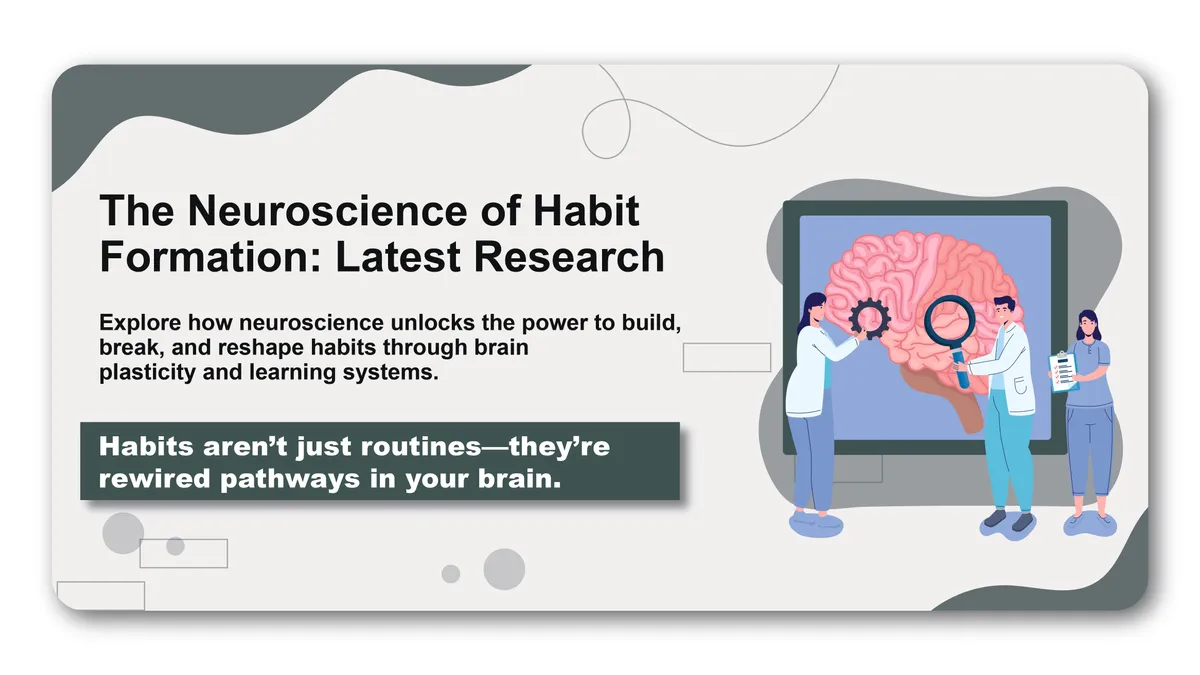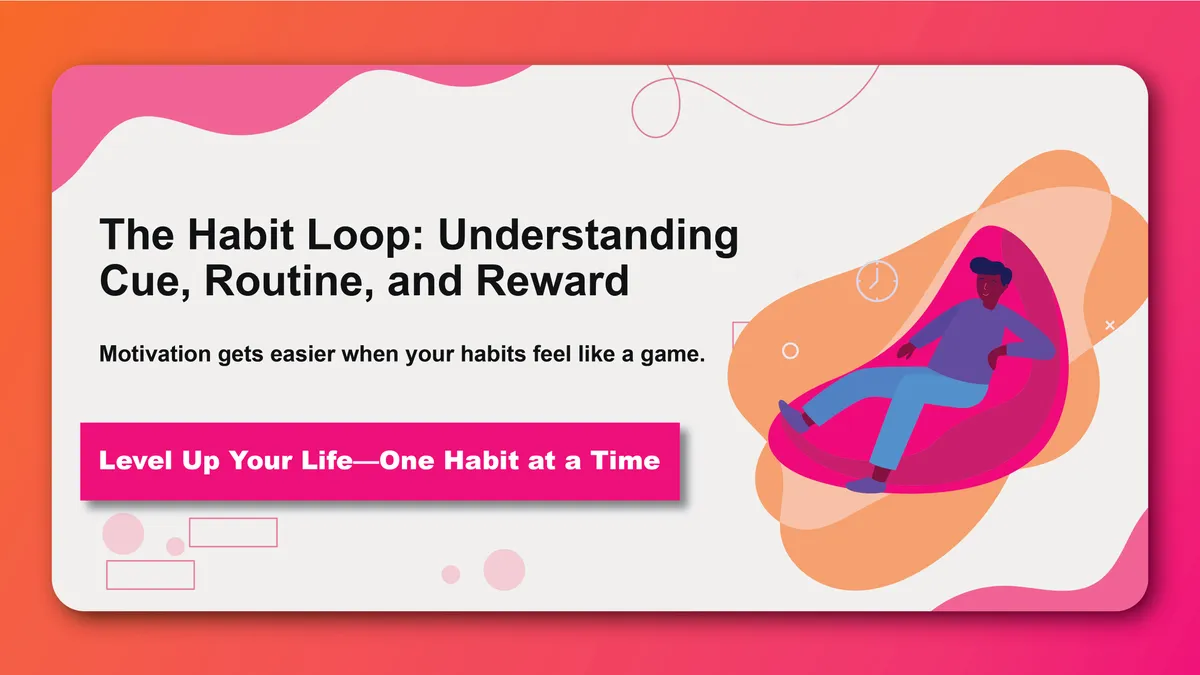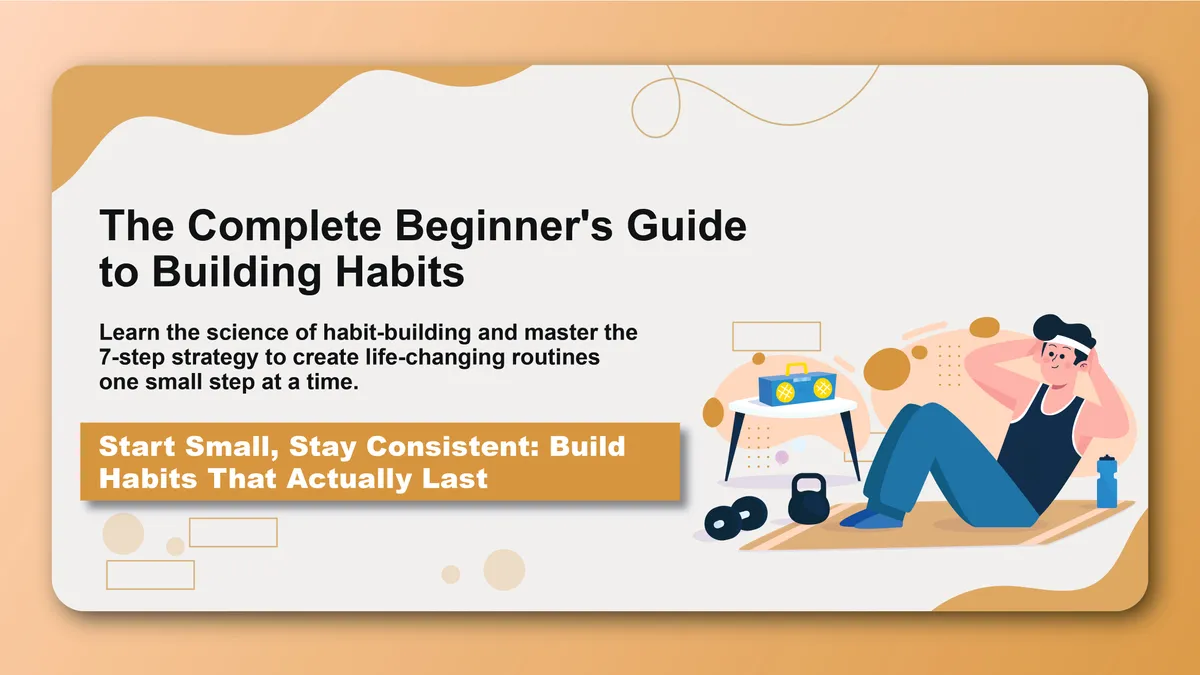When building habits, most people focus on the wrong thing. They ask "How intensely should I do this?" when they should be asking "How consistently can I do this?" The difference between habit strength and habit frequency is crucial for anyone serious about lasting behavior change.
Understanding this distinction will transform how you approach habit formation and dramatically increase your success rate.
Defining Habit Strength vs. Habit Frequency
Habit Strength
- What it is: The intensity, duration, or magnitude of a single habit performance
- Examples: Running 5 miles vs. 1 mile, reading 50 pages vs. 5 pages, meditating 30 minutes vs. 5 minutes
- Focus: Quality and intensity of individual sessions
- Appeal: Feels productive and ambitious
Habit Frequency
- What it is: How often you perform the habit over time
- Examples: Daily vs. weekly vs. monthly performance
- Focus: Consistency and repetition
- Appeal: Seems less impressive but more sustainable
The Neuroscience Behind Habit Formation
How Your Brain Builds Habits
Your brain forms habits through a process called neuroplasticity—the strengthening of neural pathways through repetition. Research reveals that:
Frequency Is King:
- Daily practice creates stronger neural pathways than intense weekly sessions
- Consistent repetition builds automaticity faster than sporadic intensity
- Regular exposure to cues strengthens the habit loop more effectively
- Predictable patterns allow your brain to anticipate and prepare for behaviors
Why Intensity Alone Fails:
- High-intensity sessions create decision fatigue
- Sporadic practice prevents neural pathway strengthening
- Irregular timing disrupts circadian rhythm alignment
- Overwhelming sessions lead to avoidance behaviors
The Compound Effect of Consistency
Think of habit formation like water carving a canyon. It's not the force of a single flood that creates the Grand Canyon—it's the consistent flow of water over time.
Mathematical Reality:
- Daily 1% improvement = 37x better after one year
- Weekly 7% improvement = 3.8x better after one year
- Monthly 30% improvement = 1.3x better after one year
Small, consistent actions compound exponentially over time.
Why People Choose Strength Over Frequency
The Intensity Trap
Psychological Factors:
- Instant gratification: Intense sessions provide immediate satisfaction
- Social validation: Impressive workouts get more attention than consistency
- Overconfidence bias: We overestimate our ability to maintain intensity
- Binary thinking: "Go hard or go home" mentality
Cultural Influences:
- Hero worship: We celebrate extreme achievements over steady progress
- Productivity culture: "More is better" philosophy
- Social media: Highlights reels showcase intensity, not consistency
- Achievement orientation: Results focus over process focus
The Cost of Intensity Focus
Immediate Costs:
- Burnout: Unsustainable intensity leads to exhaustion
- Injury: Physical and mental strain from overdoing it
- Guilt: Feeling like a failure when you can't maintain intensity
- All-or-nothing thinking: Skipping habits when you can't do them "properly"
Long-term Costs:
- Habit abandonment: Giving up when intensity becomes unsustainable
- Negative associations: Linking the habit with stress and difficulty
- Reduced confidence: Repeated failures damage self-efficacy
- Missed opportunities: Focusing on perfect execution over consistent practice
The Power of Frequency-First Thinking
Why Consistency Wins
Neurological Advantages:
- Automatic behaviors: Frequent practice creates unconscious competence
- Reduced willpower dependence: Habits become effortless through repetition
- Stronger neural pathways: Daily practice builds more robust brain connections
- Contextual learning: Regular exposure strengthens environmental associations
Psychological Benefits:
- Identity formation: Frequent practice builds "I am someone who..." identity
- Confidence building: Regular success creates positive self-perception
- Momentum creation: Daily wins build motivation for continued action
- Stress reduction: Predictable routines reduce decision fatigue
The Minimum Effective Dose
Concept: The smallest amount of practice that produces a meaningful result.
Examples:
- Exercise: 5 minutes daily beats 2 hours weekly
- Reading: 1 page daily beats 50 pages monthly
- Meditation: 2 minutes daily beats 30 minutes weekly
- Learning: 10 minutes daily beats 2 hours weekly
Why It Works:
- Removes barriers: So small you can't say no
- Builds momentum: Success breeds success
- Creates identity: "I'm someone who does this daily"
- Allows scaling: Easy to increase once the habit is established
The Frequency-First Strategy
Step 1: Identify Your Minimum Viable Habit
Questions to Ask:
- What's the smallest version of this habit I could do?
- What would I do on my worst day?
- What's so easy I can't fail?
- What would I do if I only had 30 seconds?
Examples:
- Writing habit: Write one sentence daily
- Exercise habit: Do one push-up daily
- Meditation habit: Take three deep breaths daily
- Reading habit: Read one paragraph daily
Step 2: Commit to Frequency Over Intensity
Daily Commitment:
- Promise to do the minimum viable habit every day
- Don't allow yourself to skip days
- Do something, even if it's tiny
- Celebrate consistency over performance
Intensity as Bonus:
- If you feel like doing more, go ahead
- But never let intensity become the requirement
- Return to minimum viable habit if intensity isn't sustainable
- Remember: frequency is the foundation, intensity is the decoration
Step 3: Track Frequency, Not Performance
What to Track:
- Did I do it? (Yes/No)
- How many days in a row? (Streak counter)
- How consistent am I? (Percentage over time)
- What's my longest streak? (Motivation metric)
What NOT to Track:
- How long you did it
- How intensely you did it
- How much you improved
- How you felt about it
Real-World Applications
Exercise Habits
Frequency-First Approach:
- Goal: Exercise daily
- Minimum: 5 minutes of movement
- Scaling: Add intensity once daily habit is established
- Result: 365 days of movement vs. 52 intense gym sessions
Traditional Approach:
- Goal: 3 intense workouts per week
- Reality: Often becomes 1 workout per week due to scheduling
- Result: 52 workouts per year vs. 365 movement sessions
Learning Habits
Frequency-First Approach:
- Goal: Learn something daily
- Minimum: Read one page or watch one educational video
- Scaling: Increase to more pages or longer videos
- Result: 365 learning sessions building compound knowledge
Traditional Approach:
- Goal: Study for 2 hours twice a week
- Reality: Often skipped due to time constraints
- Result: Sporadic learning with poor retention
Creative Habits
Frequency-First Approach:
- Goal: Create something daily
- Minimum: Write one sentence, draw one line, play one chord
- Scaling: Increase output as habit strengthens
- Result: 365 creative sessions building skills and portfolio
Traditional Approach:
- Goal: Long creative sessions on weekends
- Reality: Often postponed due to perfectionism or lack of time
- Result: Inconsistent creative output and skill development
When Intensity Matters
The Role of Intensity in Habit Formation
After Frequency Is Established:
- Use intensity to accelerate progress
- Maintain minimum frequency as safety net
- Scale intensity based on capacity and motivation
- Return to minimum when life gets busy
Performance Habits:
- Athletes need both consistency and intensity
- Professionals need regular practice plus challenging sessions
- Students need daily study plus intensive review periods
- Musicians need daily practice plus performance preparation
The Optimal Balance
The 80/20 Rule:
- 80% of results come from consistent, minimum effective practice
- 20% of results come from occasional high-intensity sessions
- Focus: Prioritize consistency while allowing for intensity when possible
Progressive Overload:
- Start with minimum viable frequency
- Establish unbreakable consistency
- Gradually increase intensity while maintaining frequency
- Always have a fallback minimum for difficult periods
Overcoming Frequency Obstacles
Common Challenges
Challenge 1: "It Doesn't Feel Like Enough"
- Solution: Trust the process and compound effects
- Mindset: Something is infinitely better than nothing
- Evidence: Track your progress over weeks and months
Challenge 2: "I Have Time for More"
- Solution: Do more as a bonus, not a requirement
- Mindset: Frequency first, intensity second
- Safety: Always maintain minimum viable habit
Challenge 3: "Others Are Doing More"
- Solution: Focus on your own consistency journey
- Mindset: Comparison is the thief of joy and progress
- Reality: Most people doing "more" aren't consistent
Building Frequency Resilience
Environmental Design:
- Make minimum viable habits incredibly easy
- Remove all barriers to daily practice
- Create obvious cues for habit initiation
- Design for your worst days, not your best days
Mental Frameworks:
- Never zero: Always do something, even if tiny
- Streak protection: Prioritize maintaining consistency
- Identity focus: "I'm someone who does this daily"
- Process over outcome: Celebrate showing up, not performance
The Long-Term Perspective
Why Frequency Compounds
Month 1: Building neural pathways and habit loops Month 2: Reducing friction and increasing automaticity Month 3: Strengthening identity and self-concept Month 6: Habit becomes part of who you are Year 1: Compound effects become dramatically visible
The Frequency Mindset
Daily Questions:
- Did I show up today?
- How can I maintain this tomorrow?
- What's the minimum I can do?
- How can I make this easier?
Weekly Reviews:
- How consistent was I this week?
- What obstacles did I overcome?
- How can I improve my consistency?
- What adjustments will help next week?
Your Frequency-First Action Plan
Week 1: Define Your Minimum
- Choose one habit to focus on
- Define the smallest possible version
- Commit to daily practice
- Track completion only
Week 2: Protect Your Streak
- Prioritize consistency over intensity
- Do something every day, even if tiny
- Celebrate each day completed
- Adjust minimum if needed
Week 3: Build Resilience
- Test your system during busy days
- Maintain minimum even when you could do more
- Develop contingency plans for obstacles
- Focus on showing up, not performing
Week 4: Evaluate and Expand
- Review your consistency rate
- Celebrate your frequency success
- Consider gradual intensity increases
- Plan for long-term sustainability
Remember: The goal isn't to be perfect—it's to be consistent. A daily 5-minute habit practiced for a year will transform you more than sporadic 2-hour sessions. Choose frequency over intensity, and watch as small, consistent actions compound into remarkable results.
Ready to build habits that actually stick? Start tracking your consistency with Habityzer and discover the power of frequency-first habit formation.



